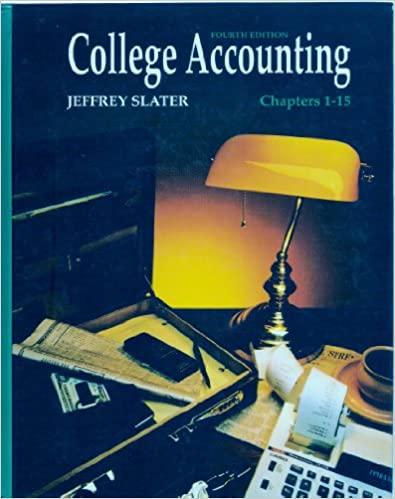WoolCorp WoolCorp buys sheep's wool from farmers. The company began operations in January of this year, and is making decisions on product offerings, pricing, and vendors. The company is also examining its method of assigning overhead to products. You've just been hired as a production manager at WoolCorp. Currently WoolCorp makes three products: (1) raw, clean wool to be used as stuffing or insulation: (2) wool yarn for use in the textile industry, and (3) extra-thick yarn for use in rugs Upper management would like your recommendations regarding a production decision regarding their current and proposed product lines. Continue/Discontinue For the past year, WoolCorp has experimented with its third product, extra-thick rug yam. The company wishes to consider whether to continue or discontinue manufacturing and selling this product. You decide to prepare a differential analysis of the income related to all three products. To begin your analysis, you review the following condensed income statement. Then scroll down to complete the differential analysis WoolCorp Condensed Income Statement For the Year Ended December 31, 2048 Raw Wool Wool Yarn Rug Yarn $210,000 $155,000 $187,000 Total Company $552,000 Sales Costs of goods sold: Variable costs $(18,600) (12,400) Fixed costs $(48,000) (32,000) $(80,000) $130,000 $(37,200) (24,790) $(61,990) $125,010 $(103,800) (69,190) $(172,990) $379,010 $(31,000) Total cost of goods sold $124,000 Gross profit Operating expenses: Variable expenses $(7,750) $(5,000) (89,000) $(94,000) (77,500) $(53,130) (106,200) $(159,330) $(65,880) (272,700) $(338,580) Fixed expenses ${85,250) Total operating expenses WoolCorp Condensed Income Statement For the Year Ended December 31, 2018 Raw Wool Wool Yarn Rug Yarn Total Company Sales $210,000 $155,000 $187,000 $552,000 Costs of goods sold: Variable costs $(48,000) $(18,600) $(37,200) $(103,800) Fixed costs (32,000) (12,400) (24,790) (69,190) Total cost of goods sold $(80,000) $(31,000) $(61,990) $(172,990) Gross profit $130,000 $124,000 $125,010 $379,010 Operating expenses: Variable expenses $(5,000) $(7,750) $(53,130) $(65,880) Fixed expenses (89,000) (77,500) (106,200) (272,700) Total operating expenses $(94,000) $(85,250) $(159,330) $(338,580) Operating income (loss) $36,000 $38,750 $(34,320) $40,430 Complete the following table using the data in the preceding Income statement to compare the effects of dropping the rug yarn line of products. If required, use a minus sign to indicate a loss Differential Analysis Continue Rug Yarn (Alternative 1) or Discontinue Rug Yarn (Alternative 2) December 31, 20Y8 Continue Rug Yarn (Alternative 1) Discontinue Rug Yarn (Alternative 2) Differential Effects (Alternative 2) Revenues 187,000 Costs: Variable Fixed 0 $1 - 187,000 X Profit (loss)








